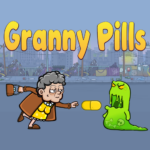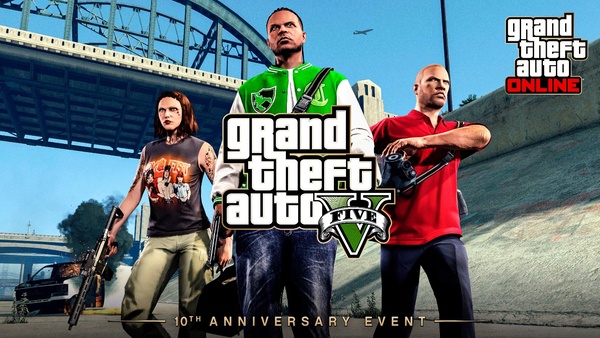League of Legends (LoL) is one of the most iconic and influential online games ever created. Developed by Riot Games and released in 2009, it introduced millions of players to the fast-paced, team-based world of Multiplayer Online Battle Arenas (MOBA). Over the past decade, it has evolved into a global cultural phenomenon, defining the modern esports landscape and spawning a universe of lore, music, and animation.
More than just a game, League of Legends is a platform for competition, creativity, and community. With an ever-expanding champion roster, frequent updates, and a player base that spans the globe, LoL continues to be one of the most played and watched games in the world.
1. The Origins and Design Philosophy of League of Legends
League of Legends was inspired by the popular Warcraft III mod Defense of the Ancients (DotA). Riot Games set out to create a standalone game that could offer strategic depth, regular updates, and a welcoming competitive environment for all skill levels.
LoL launched as a free-to-play game supported by microtransactions, focusing on accessibility and low system requirements. Its beginner-friendly tutorials, low-latency servers, and global localization made it easy for newcomers to jump in while still offering enough depth to keep hardcore players engaged.
From the beginning, Riot's goal was clear: create a skill-based, team-oriented experience with an emphasis on player mastery and competitive integrity.
2. Core Gameplay and MOBA Mechanics
Each match in League of Legends pits two teams of five players against each other in a battle to destroy the opposing team’s Nexus. Players choose from a wide pool of champions, each with unique abilities, and take on specific roles such as top lane, mid lane, jungle, or support.
Key gameplay elements include:
-
Three lanes, jungle objectives, and map vision
-
Real-time combat with abilities, cooldowns, and item builds
-
Teamfighting, wave control, and strategic objective play
With matches typically lasting 20–40 minutes, each game demands a mix of tactics, reflexes, and communication, making every session a fresh mental challenge.
3. The Expanding Champion Roster
One of League’s most impressive features is its ever-growing roster of over 160 champions, each bringing a different style and personality to the battlefield. Champions range from sword-wielding assassins to ancient gods, monstrous creatures, and hyper-skilled marksmen.
Every champion is designed with:
-
A distinct ability kit (passive, Q/W/E/R)
-
Defined strengths and counters for balance
-
A unique backstory that ties into the larger Runeterra universe
The constant release of new champions and reworks ensures the meta stays fluid and exciting, encouraging both veterans and newcomers to explore new strategies.
4. Ranked Play and Competitive Progression
League of Legends offers a robust ranked ladder system where players can test their skill and climb from Iron to Challenger. This system fuels the game’s competitive nature, providing clear goals and a strong sense of accomplishment.
Ranked features include:
-
Solo/Duo Queue and Flex Queue formats
-
Seasonal resets and rewards based on performance
-
A visible skill rating that matches players of similar ability
Climbing the ladder isn’t just about mechanics—it’s about teamplay, adaptation, and consistency, making ranked play a true test of both skill and mindset.
5. Visuals, Art Direction, and Client Experience
Over the years, League of Legends has received major visual updates, transforming its once-simple aesthetic into a polished, modern spectacle. Champions, maps, and animations have been reworked to align with current industry standards while preserving LoL’s iconic style.
Key upgrades include:
-
Fully overhauled Summoner’s Rift with improved lighting, textures, and terrain
-
Modernized HUD and scoreboard UI for better clarity
-
New voiceovers, skins, and champion themes that enhance immersion
Riot has also continuously improved the game client with features like replays, champion mastery tracking, and event integration.
6. Skins, Cosmetics, and Monetization
League of Legends generates revenue through the sale of skins, chromas, emotes, and other cosmetics. None of these affect gameplay, maintaining the game’s competitive fairness.
Skin systems offer:
-
Themed collections (e.g., Star Guardian, PROJECT, K/DA)
-
Mythic-tier and Prestige skins with exclusive effects and animations
-
Loot crafting and event passes for progressive cosmetic rewards
With frequent skin releases and collaborations, LoL delivers both cosmetic creativity and meaningful progression without ever becoming pay-to-win.
7. The Rise of Esports and Global Tournaments
League of Legends helped pioneer modern esports, launching a professional scene that now spans every continent. With massive events and multi-million-dollar prize pools, LoL esports has become a mainstream spectacle.
The competitive scene includes:
-
Regional leagues like the LCK, LPL, LEC, and LCS
-
The annual World Championship, watched by tens of millions worldwide
-
Mid-Season Invitational (MSI) and All-Star events
Teams like T1, G2 Esports, and JD Gaming have become iconic, and players like Faker have achieved legendary status. Riot’s commitment to production quality, broadcasting, and competitive integrity sets the gold standard.
8. Lore, Universe, and Cross-Media Expansion
What began as a game is now a full-blown fantasy universe. Riot has developed the Runeterra world with detailed lore, comics, music, and TV shows. Champions have deep backstories, faction rivalries, and evolving arcs.
Major lore expansions:
-
The release of Arcane, the Emmy-winning animated series on Netflix
-
Canonical regions like Piltover, Zaun, Demacia, Noxus, and Ionia
-
Music videos and cinematic shorts (e.g., Warriors, Awaken)
This transmedia strategy deepens emotional investment and brings new audiences into the League of Legends ecosystem.
9. Community, Tools, and Third-Party Integration
League of Legends has cultivated a massive global community of streamers, artists, analysts, and content creators. Tools like OP.GG, Mobalytics, and Porofessor help players track stats, improve performance, and analyze match history.
Community features include:
-
In-game clubs and friend systems
-
Custom games and spectator mode
-
Riot API for developers to build apps, bots, and overlays
From guides and coaching to memes and fan art, the LoL community is one of the most active in the gaming world.
10. The Future of League of Legends
Riot Games continues to invest in League of Legends as both a game and a platform. With regular patches, champion updates, and a growing media empire, the future of LoL looks brighter than ever.
Upcoming developments may include:
-
New game modes and client features
-
Further integration with Riot's other titles (e.g., Legends of Runeterra, Teamfight Tactics)
-
More storytelling through shows, novels, and music
League of Legends is no longer just a MOBA—it’s an evolving universe, a professional sport, and a touchstone for competitive gaming.
Conclusion
League of Legends is a once-in-a-generation title that has stood the test of time. With its rich strategic gameplay, deep champion pool, thriving esports scene, and expansive universe, it remains at the forefront of modern gaming more than a decade after its release.
Whether you’re climbing ranked, watching Worlds, or diving into Runeterra’s lore, League offers a dynamic, constantly evolving experience. It’s not just about winning—it’s about learning, adapting, and growing in a world that keeps challenging and inspiring millions of players across the globe.





























